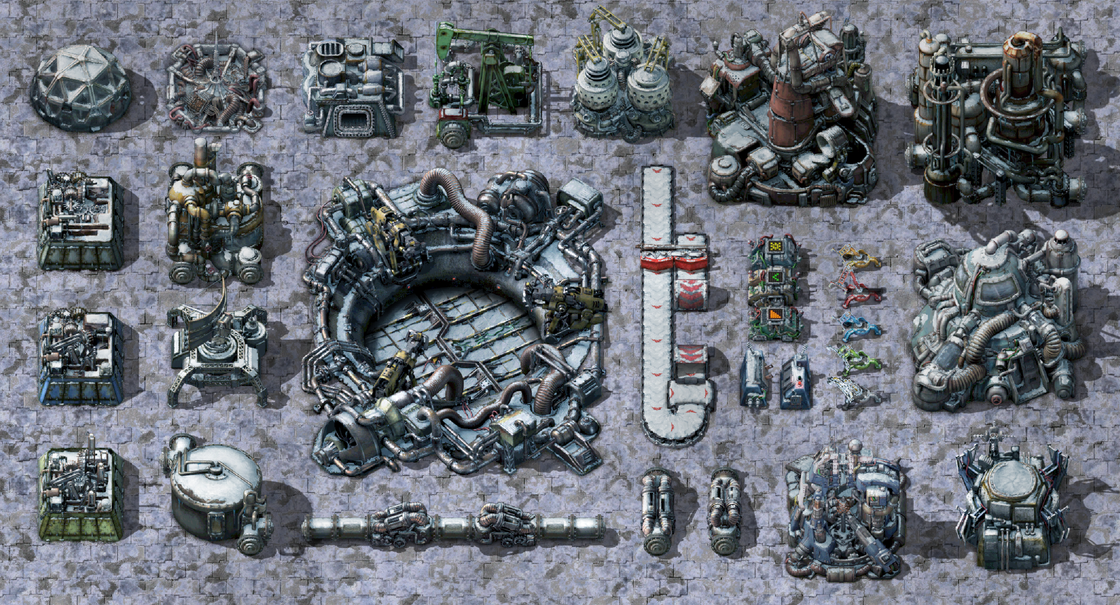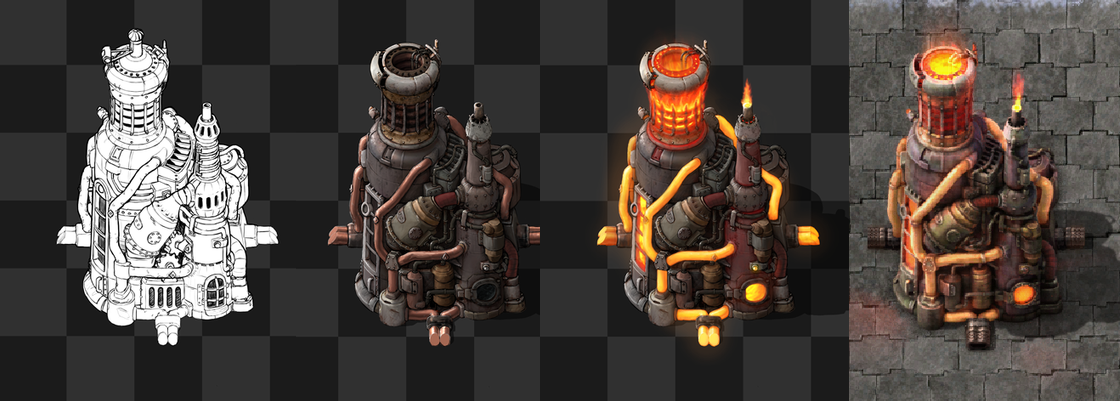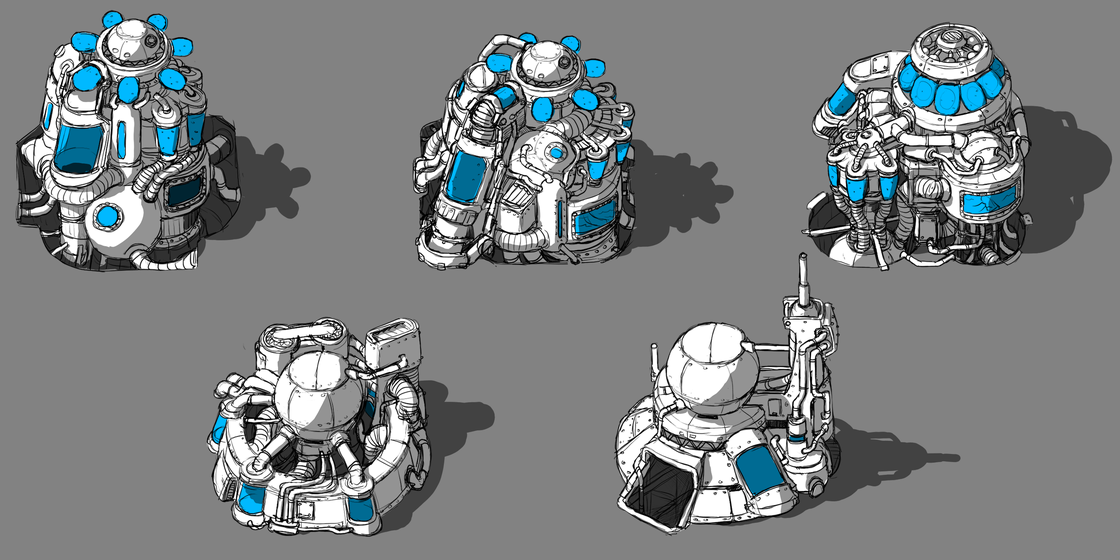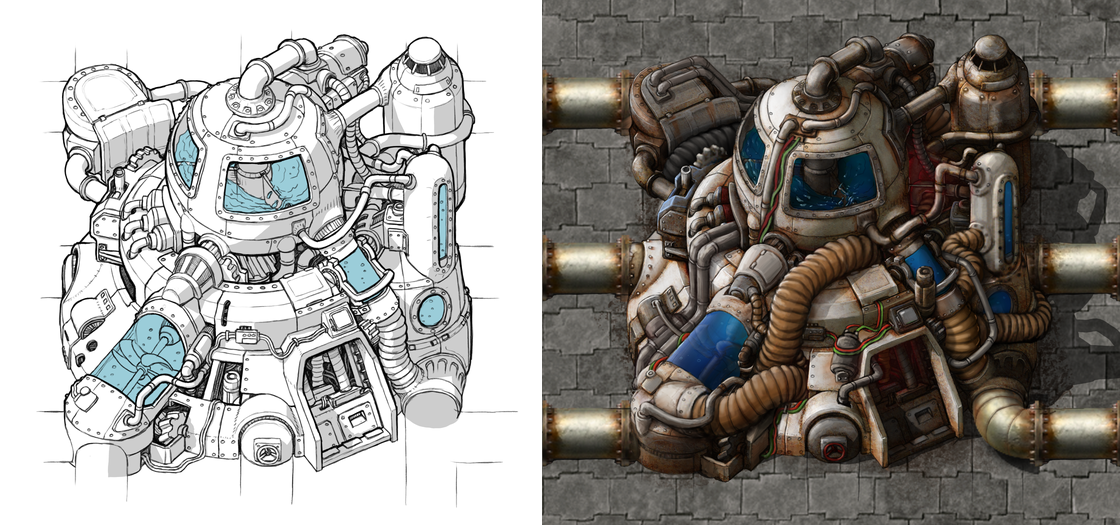Hello,
It's time to reveal the last planet. So. Warning: Spoilers ahead.
![]()
It's day, but stars still twinkle in the dark sky. You count the planet's sun among the stars, larger and brighter than the others, but still so dim you can barely feel its warmth at all. A howling wind chills you to the bone and gently rocks the iceberg you are sitting on.
This planet has no land. It's an ocean world of liquid ammonia. One continuous ocean covers the entire planet and it's at least 200km deep.
The best landing spot you could find was this large iceberg. The sheet of ice is only a few meters thick and seems to contain a lot of trapped air, but frozen water is a very solid material as long as it stays cold. It's able to support a landing pad, so that's good enough.
You sit on the edge of the ice watching the snow fall. It gracefully deposits itself on your frozen machines. Assembling machines, chemical plants, transport belts, and inserters, all frozen in place unable to move.
In the distance you spot columns of teal gas, fluorine bubbling up from the depths. It's one of the resources you're here for, but out of reach for now.
There seems to be plenty of oil, most likely from microorganisms in the core. Making fuel on site shouldn't be a problem as soon as the refinery is unfrozen.
You take the time to plan your next moves: collecting ice from the surrounding ocean to extend the platform, heating towers to warm your buildings, heat pipes to move the heat around, and concrete to make sure that the heat doesn't melt the ice.
The thought of running heat pipes through all your designs is starting to make your head spin.
But it's okay, don't panic. The one thing you do have on this planet... is time.
A flurry of shooting stars distracts you for a moment. You can't help but wonder if they are little meteorites burning up in the atmosphere, or the remaining parts of the space platform that dropped you here. The space platform barely made it to this planet and never made it out of orbit. You got out just in time. Hopefully a replacement platform will be here soon... if it survives.
There's a clunking sound behind you as the landing pad opens its hatch. You turn to see a formation of cargo pods descend through the atmosphere. It's time to build.
Terrain graphics by Fearghall and Earendel.
Aquilo doesn't have any land. It has a few icebergs floating around, but the building space is very restricted.
If you use an offshore pump in the ammoniacal ocean you don't get water, you get mostly liquid ammonia but with some ice particles floating in it. You can separate these in a chemical plant. These substances have a variety of uses, but among them is the ability to make Ice platform.
Ice platform allows you to extend the iceberg and extend your build area. Making ice platform can be a slow process so it's good to scale this process while you have spare energy and heat.
Heat is the next big mechanic and it's a wonderful twist to the way that you build. Most things on Aquilo freeze if they are not heated.
 A collection of frozen machines. Frozen effects are all hand painted by me (Earendel).
A collection of frozen machines. Frozen effects are all hand painted by me (Earendel).
It's better and faster to paint snow in 2D than to add a snow layer in 3D, especially considering most of the original graphics have a lot of hand-painted post-production.
Heat is generated by a heating tower, which burns chemical fuels that can be made locally, or the nuclear reactor that requires imports from Nauvis. The heating tower is interesting as a burner because it's more like the reactor, it continues to consume fuel even at max temperature. As well as heating, this can be a good way to get rid of anything burnable, which means it can also be very useful on Gleba.
 Heating tower from line art to concept art (inactive and active) by Earendel, to the final graphics by Jerzy.
Heating tower from line art to concept art (inactive and active) by Earendel, to the final graphics by Jerzy.
Both the heating tower and nuclear reactor are heat sources. They spread heat to adjacent entities, but they only need to get the entity up to 30°C for the entity to thaw. This means that in some places like outposts, going for higher temperatures is a waste, so that is one of the reasons we added the ability to read the temperature of heat sources and control them with circuits (FFF-428).
Heat sources only being able to warm adjacent things that touch them is very limiting. Instead you use heat pipes to move the heat around to all the entities adjacent to connected heat pipes (including diagonally). Every entity that needs heat also consumes heat. The effect is minor per entity but can result in a lot of heat loss over long distances, so sometimes you want a hotter heat source so that the heat can travel further.
Heat pipes and heated buildings would melt the ice, so to protect the ice that keeps you floating you can place concrete (or refined concrete) as an insulator. In practice this just means that most entities can't be placed directly on to ice, we don't actually turn the ice tiles into ocean... anymore. That used to be a mechanic, but it was too annoying to deal with when you try to build in an already heated area.
Heat pipes can't go underground (or under ice) so you'll need to route the belts and pipes around them while building. Often this means a machine will need access to belts, pipes and heat, but all the belts and pipes also need access to heat, and this can lead to some nice little puzzles and some very interesting builds.
Aquilo is notably lacking in basic resources. On the other planets you can land with nothing and build your way to another rocket. On Aquilo if you land with nothing then you can do nothing.
Ok, but what DO you have?
Your resources are:
New resource graphics by Jerzy.
Solar output is truly pathetic, only 1% of Nauvis. You need some solar panels to kickstart your first few machines so efficiency modules go a long way to speeding up that process.
Ammoniacal solution can be gained via an offshore pump. With a powered heated chemical plant you can split it to ice and ammonia.
Ice can be melted for water which is needed for any power beyond the pathetic solar. It's also useful to extend your iceberg.
Ammonia can be used with crude oil to make solid fuel, or combined with solid fuel to make rocket fuel.
Crude oil can be collected with a pumpjack in a few places where it floats up from the ocean depths. It can be combined with ammonia to make fuel, or refined the usual way which can be a useful sink for excess ice and water while also making fuel. Also, note that it's an animated resource now, even on Nauvis.
Lithium brine floats up to the surface in some spots and requires a pumpjack. It's used to make lithium, which you'll need for a variety of things including the planet's science pack.
Fluorine gas bubbles up in some places and this also requires a pumpjack. Fluorine is used to make coolant which is an essential part of this planet's industry: Cryogenics. Coolant is used in a few things but initially it's only used for Aquilo's science pack, the Cryogenic science pack, which is made in a...
The Cryogenic plant is a powerful 5x5 structure with a base crafting speed of 2. It doesn't have base productivity because it deals with a lot of looping recipes, but it does have 8 module slots, so extra productivity modules can be used for the recipes that support it.
 Early Cryogenic plant sketches by Earendel. Albert liked the bottom 2 designs so I made something based on those. Some elements of the top 3 got reused in other designs.
Early Cryogenic plant sketches by Earendel. Albert liked the bottom 2 designs so I made something based on those. Some elements of the top 3 got reused in other designs.
 Cryogenic plant line art and concept before final pale turquoise paint colour was chosen.
Cryogenic plant line art and concept before final pale turquoise paint colour was chosen.
While the structure can use some chemical plant recipes, it is mainly focussed on recipes that need cold temperatures and a lot of precision. Some examples are: coolant, coolant cooling, the cryogenic science pack, fusion power cells, quantum processors, and some other late-game items.
Final graphics by Jerzy, sounds by Ian.
Quantum processors are like the final tier of circuit, they need something from each of the new planets. They are needed to make the fusion reactors that you saw in FFF-420 (Cryogenic plants are the hidden structures in that post). Quantum processors are also needed to make the final turret in the game which is also unlocked on Aquilo: The Railgun.
The railgun turret requires both ammo and electricity to function. It has a range of 40 and the damage... well it starts at 10k.
It damages everything in a continuous line, so be careful not to stand on the wrong side of it.
 Railgun line art and concept by Earendel. There are pipe connections in the design because it was intended to a be a turret that requires cooling to function.
Railgun line art and concept by Earendel. There are pipe connections in the design because it was intended to a be a turret that requires cooling to function.
This turret has a 3x5 base. It has a fixed direction like a flamethrower turret but the attack cone is narrower than 90 degrees.
If you could only build in 4 directions this would create blind spots, so you can build railgun turrets in 8 directions.
Graphics by Jarosław, sounds by Ian.
There's also a handheld version that is very effective against Demolishers (FFF-429), but that's not the main use for the turret version.
What do you need the turret for? I'll let you speculate.
Aquilo is a challenging but very unique planet. After spending a few hours getting absorbed into Aquilo's unique building patterns, it feels really weird going back to any of the other planets. By comparison everything else suddenly looks so simple. It's a feeling that struck me after playing on my very first Aquilo gameplay prototype, but the same feeling hits me after every playtesting LAN we've done too.
It's quite easy to accidentally under power your base, which can lead to a lack of heat, and subsequently freeze half your base. When this happens to you, I invite you to turn off Alt mode and appreciate the view. The frozen factory isn't a sight you get often, so enjoy the moment.
I know you're getting unreasonably excited for the release of Space Age, but as always, keep your cool and comment in the usual places.